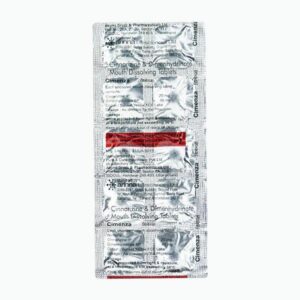CINNARIZINE + DIMENHYDRINATE
Cinnarizine: Cinnarizine is a drug primarily used to treat nausea and dizziness associated with motion sickness and certain inner ear disorders. It belongs to the class of drugs known as calcium channel blockers.
The exact mechanism of action of cinnarizine is not completely understood, but it is believed to work by blocking the entry of calcium into cells, particularly in the arterial walls. This action results in vasodilation (widening of blood vessels) and improved blood circulation in the brain. By preventing calcium influx, cinnarizine also acts as an antihistamine and an anticholinergic agent, reducing the symptoms of motion sickness.
Cinnarizine is typically taken orally in tablet form. The recommended dose ranges from 15 to 30 mg per day divided into two to three doses, with the last dose taken before bed. It is advisable to take cinnarizine with food to minimize stomach irritation.
Common side effects of cinnarizine may include drowsiness, dizziness, dry mouth, constipation, and gastrointestinal disturbances. These side effects are usually mild and transient. In rare cases, more serious side effects like extrapyramidal symptoms (motor disturbances), blurred vision, and hypersensitivity reactions can occur. It is important to seek medical attention if any severe or unusual side effects occur.
Cinnarizine may interact with other medications, so it is important to consult a healthcare professional before starting this drug. It is not recommended for use in certain medical conditions, such as Parkinson’s disease, severe hypotension, and liver disease, without medical supervision.
Overall, cinnarizine is a widely used drug in the management of motion sickness and inner ear disorders. However, it is important to follow the prescribed dose and discuss any concerns or potential drug interactions with a healthcare professional.
Dimenhydrinate: Dimenhydrinate is a drug that is commonly used to treat nausea, vomiting, and dizziness associated with motion sickness. It is also used to prevent or treat symptoms of inner ear disturbance or vertigo.
The mechanism of action of dimenhydrinate is not fully understood, but it works by blocking the action of histamine in the body. Histamine is a chemical that is released during an allergic reaction and can cause symptoms such as itching, sneezing, and watery eyes. By blocking histamine, dimenhydrinate helps to reduce symptoms of motion sickness and alleviate nausea and vomiting.
The standard oral dose of dimenhydrinate for adults is 50-100 mg every 4-6 hours as needed. The maximum daily dose should not exceed 400 mg. For children between the ages of 2-6, the recommended dose is 12.5-25 mg every 6-8 hours, with a maximum daily dose of 150 mg. Children between the ages of 6-12 can take 25-50 mg every 6-8 hours, with a maximum daily dose of 300 mg.
Common side effects of dimenhydrinate include drowsiness, dry mouth, blurred vision, constipation, and urinary retention. These side effects are generally mild but can be more pronounced in some individuals. It is important to avoid activities that require mental alertness, such as driving or operating heavy machinery, while taking dimenhydrinate due to its sedating effects.
In rare cases, more serious side effects may occur, such as allergic reactions, confusion, hallucinations, and irregular heartbeat. If any of these symptoms occur, medical attention should be sought immediately.
It is important to note that dimenhydrinate may interact with other medications, such as sedatives, tranquilizers, and alcohol, leading to increased drowsiness and impaired cognitive function. Therefore, it is important to consult with a healthcare professional or pharmacist before starting dimenhydrinate to ensure it is safe to use with any other medications being taken.


